Buyer remorse, defined as a psychological response, occurs when a consumer experiences doubt or regret after making a purchase. This sentiment often emerges once the initial excitement surrounding the acquisition fades, leaving the buyer questioning the value, necessity, or quality of their decision.
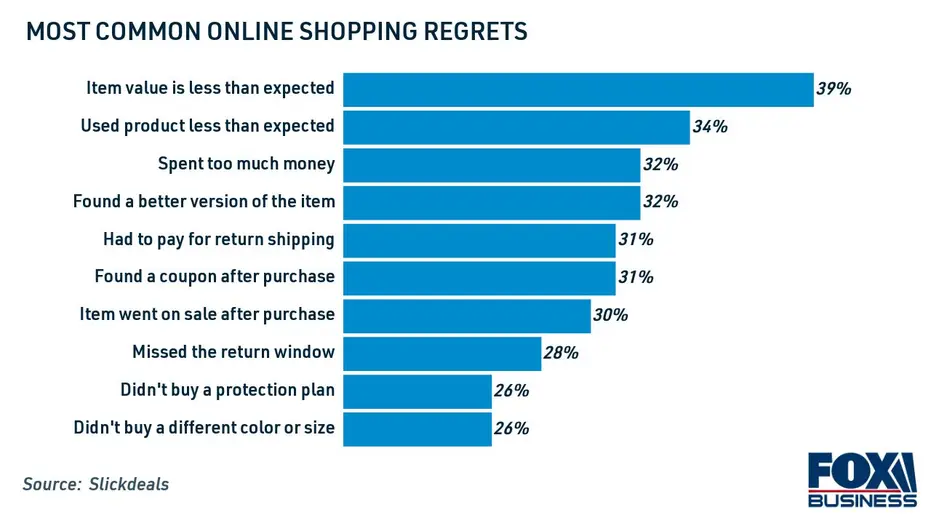
The phenomenon of buyer’s remorse is prevalent in today’s dynamic consumer landscape, characterized by abundant options and impulsive buying behaviors, particularly in the realm of eCommerce. As consumers navigate through a plethora of choices and succumb to the allure of instant gratification, they may find themselves grappling with feelings of uncertainty and dissatisfaction post-purchase.
Understanding the Triggers of Buyer’s Remorse:
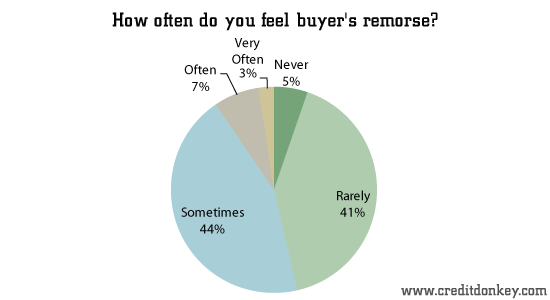
Unraveling the underlying causes of buyer’s remorse is essential for mitigating its impact and fostering consumer confidence in purchasing decisions. Here are some common triggers that contribute to the onset of buyer’s remorse:
- Overwhelming Choices: The vast array of product options available in the digital marketplace can overwhelm consumers, making decision-making more challenging and increasing the likelihood of post-purchase doubts.
- Impulse Purchases: The ease of online shopping and persuasive marketing tactics often prompt consumers to make impulsive buying decisions. However, once the initial excitement wears off, buyers may question the necessity or value of their impulse purchases.
- Financial Concerns: Spending money, especially on high-ticket items, can lead to financial anxiety and feelings of regret if consumers perceive that they may have overspent or misallocated their funds.
- External Influences: Social pressures, societal expectations, and the desire to keep up with peers can influence purchasing decisions and contribute to feelings of regret if consumers perceive that their choices do not align with societal norms or expectations.
- High Expectations: Marketing campaigns often create high expectations for products or services. If the actual experience falls short of these expectations, consumers may experience disappointment and regret over their purchase.
- Fear of Missing Out (FOMO): Exposure to social media and trends can trigger feelings of FOMO, prompting consumers to make rushed purchasing decisions in order to avoid missing out on perceived opportunities or experiences.
- Post-Purchase Rationalization: Following a purchase, individuals seek validation for their decision and may experience regret if they encounter information that challenges or undermines their choice.
Impacts of Buyer’s Remorse on Businesses:
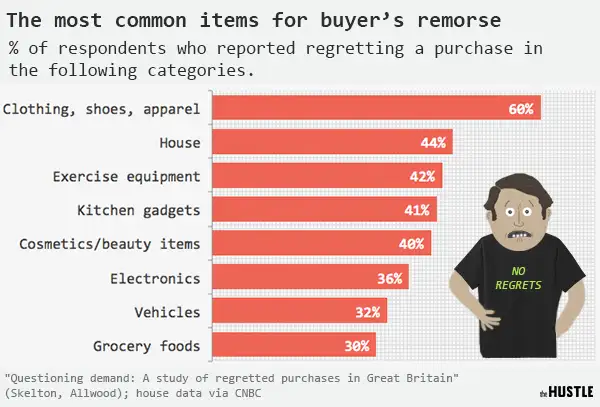
For businesses, buyer’s remorse isn’t just a fleeting sentiment experienced by customers; it’s a significant factor that can shape various aspects of operations and outcomes. Here are the consequences of buyer’s remorse for merchants:
- Increased Returns & Refunds: A surge in return requests places a logistical burden on businesses. Managing these returns and processing refunds not only impacts profitability but also strains operational efficiency.
- Higher Customer Acquisition Costs: Re-engaging customers who regret their purchases is more challenging and costly. Rebuilding trust and confidence often requires additional marketing efforts, surpassing the initial acquisition cost and stretching marketing budgets.
- Damaged Brand Reputation: In the era of online reviews and social media, negative post-purchase experiences can quickly spread to a wide audience. A single instance of buyer’s remorse can tarnish a brand’s reputation and deter potential customers, weakening brand image.
- Reduced Customer Loyalty: Customer loyalty, the cornerstone of recurring business, is jeopardized by experiences of regret. Trust erosion due to buyer’s remorse leads to reduced repeat business and diminishes the lifetime value of customers.
- Lost Sales Opportunities: Customers experiencing post-purchase regret are less likely to engage in additional purchases. This loss extends beyond immediate sales to potential cross-sells or upsells that might have occurred.
- Operational Strain: All backend processes, from customer support to inventory management, face strain when addressing concerns of regretful customers. Deploying additional resources to manage these issues can impact overall operational efficiency.
- Emotional Disconnect: Beyond tangible metrics, buyer’s remorse can create an emotional divide between the brand and its customer base. Persistent feelings of regret can influence long-term buying behaviors, leading to an emotional disconnect between consumers and the brand.
Learn about buyer personas here.
Strategies to Tackle Buyer Remorse:
#1 | Transparent Product Descriptions

Ensuring that product descriptions are transparent entails providing accurate and comprehensive details, specifications, and images. This transparency is crucial in managing and meeting customer expectations effectively. When customers have access to clear and truthful information about a product, they are more likely to make informed purchasing decisions. Additionally, transparent product descriptions help build trust and credibility with customers, as they feel confident in the accuracy of the information provided.
To achieve transparent product descriptions, businesses should focus on:
- Accuracy: Ensure that all information provided about the product, including its features, dimensions, materials, and functionalities, is truthful and precise. Avoid exaggerations or misleading claims that could lead to customer dissatisfaction.
- Completeness: Provide comprehensive details that cover all aspects of the product, leaving no room for ambiguity or confusion. Include relevant specifications, measurements, and images from multiple angles to give customers a clear understanding of what to expect.
- Clarity: Present the information in a clear and understandable manner, using simple language and avoiding technical jargon or complex terminology. This allows customers to grasp the product details easily and make informed decisions based on their preferences and needs.
- Consistency: Ensure consistency across all product descriptions, both within the same product category and across different product lines. Consistent presentation of information helps build trust and reliability, enhancing the overall shopping experience for customers.
By prioritizing transparent product descriptions, businesses can foster trust, loyalty, and satisfaction among customers, ultimately leading to increased sales and positive brand perception.
#2 | User Reviews and Testimonials

Creating a platform for customers to share their experiences through reviews and testimonials can be immensely beneficial for businesses. Genuine feedback from satisfied customers serves as a powerful validation of product quality and helps prospective buyers make informed decisions.
Here’s how businesses can leverage user reviews and testimonials effectively:
- Establish Trust: Encourage customers to leave honest reviews and testimonials about their experiences with the product or service. Genuine feedback from real customers carries more weight and credibility than promotional content created by the business.
- Provide Insights: User reviews offer valuable insights into the strengths and weaknesses of a product, helping potential buyers understand its performance, durability, usability, and other key aspects. Businesses can use this feedback to address any concerns or issues and continuously improve their offerings.
- Influence Purchasing Decisions: Positive reviews and testimonials act as social proof, influencing the purchasing decisions of other consumers. When prospective buyers see positive feedback from satisfied customers, they are more likely to trust the product and feel confident in making a purchase.
- Foster Engagement: Encourage interaction and engagement by responding to customer reviews and addressing any questions or concerns they may have. This demonstrates a commitment to customer satisfaction and helps build a sense of community around the brand.
- Showcase Success Stories: Highlighting success stories and testimonials from happy customers can be a powerful marketing tool. Businesses can feature these testimonials on their website, social media channels, and marketing materials to showcase the real-world benefits of their products or services.
#3 | Clear Pricing & Fees

Maintaining clear and transparent pricing and fees is essential for providing a positive and trustworthy shopping experience to customers. Ambiguity or hidden costs can lead to frustration and erode trust, potentially resulting in abandoned carts or dissatisfied customers. Here’s how businesses can ensure clarity in pricing and fees:
- Transparent Product Pricing: Clearly display the price of each product, including any discounts or promotions, on the product page. Avoid using deceptive pricing tactics or hiding additional charges until the checkout process, as this can lead to customer mistrust.
- Detailed Shipping Costs: Provide transparent information about shipping fees and delivery options upfront, ideally on the product page or in the shopping cart. Customers appreciate knowing the total cost of their purchase, including shipping, before proceeding to checkout.
- No Hidden Fees: Be upfront about any additional fees or charges, such as taxes, handling fees, or processing fees. Clearly outline these costs at the beginning of the purchasing journey to avoid surprises later on.
- Clarity in Currency: If selling to customers in different regions or countries, clearly indicate the currency in which prices are displayed. Avoid confusion by providing currency conversion options or displaying prices in the local currency of the customer.
By maintaining transparency in pricing and fees, businesses can build trust and confidence with customers, leading to increased sales and customer satisfaction.
#4 | Flexible Return Policies

A flexible and customer-friendly return policy can significantly impact purchase decisions and customer satisfaction. By offering hassle-free returns, businesses demonstrate confidence in their products and show a commitment to customer satisfaction. Here’s how businesses can create flexible return policies:
- Easy-to-Understand Policy: Clearly outline the return policy on the website, including information about the return window, condition of the returned items, and any associated fees or restrictions. Use simple language and provide examples to ensure customers understand the terms.
- Extended Return Period: Consider extending the return window beyond the standard timeframe to accommodate customers who may need more time to decide. Offering a generous return period can alleviate purchase hesitations and encourage customers to make a purchase.
- Multiple Return Options: Provide customers with various return options, including in-store returns, mail-in returns, or online returns. Offering flexibility in the return process allows customers to choose the method that is most convenient for them.
- No Restocking Fees: Avoid imposing restocking fees or other penalties for returns, as these can deter customers from making a purchase. Instead, focus on making the return process as seamless and straightforward as possible.
- Exceptional Customer Service: Train customer service representatives to handle returns professionally and efficiently. Empower them to address customer concerns and resolve issues promptly, ensuring a positive experience throughout the return process.
#5 | Engaging Product Demos
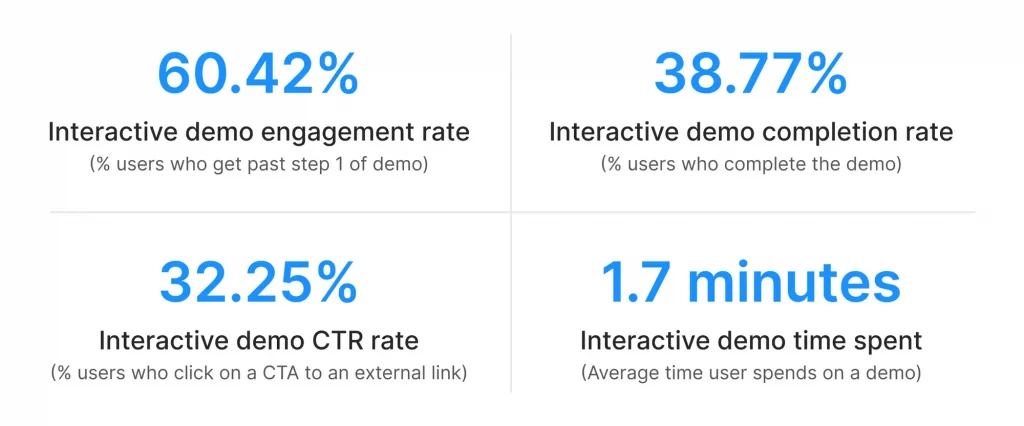
Utilizing engaging product demonstrations, such as videos or interactive experiences, can significantly enhance the shopping experience for customers. By providing visual and interactive demonstrations of your products, you offer customers a clear understanding of their features, functionality, and benefits. Here’s how businesses can leverage engaging product demos effectively:
- Comprehensive Demonstrations: Create high-quality videos or interactive experiences that showcase the product from multiple angles and perspectives. Highlight key features, demonstrate how the product works, and provide real-life scenarios to illustrate its use.
- Visual Appeal: Use visually appealing graphics, animations, and multimedia elements to captivate the audience’s attention and make the demonstration engaging and memorable. Incorporate storytelling techniques to create a compelling narrative around the product.
- Accessibility: Ensure that product demos are easily accessible to customers across various platforms and devices. Optimize videos for mobile viewing and provide alternative formats for users with disabilities.
- Integration with Product Pages: Embed product demos directly on product pages to provide seamless access to relevant information during the shopping journey. Allow customers to interact with the demo while browsing product details to make informed purchase decisions.
- Customer Testimonials: Include testimonials or reviews from satisfied customers within the product demo to add credibility and social proof. Hearing positive feedback from real users can instill confidence in potential buyers and encourage them to make a purchase.
#6 | Responsive Customer Service

Responsive and attentive customer service is crucial for addressing customer concerns and inquiries promptly. By providing timely and helpful assistance, businesses can prevent small doubts or issues from escalating into significant regrets or dissatisfaction. Here’s how businesses can ensure responsive customer service:
- Multichannel Support: Offer customer support through various channels, including phone, email, live chat, and social media, to accommodate different preferences and communication styles. Ensure that support channels are monitored regularly and that responses are provided promptly.
- Trained Support Staff: Train customer service representatives to handle inquiries professionally and efficiently. Equip them with the knowledge and resources needed to address common issues and resolve customer concerns effectively.
- Personalized Assistance: Provide personalized assistance tailored to each customer’s needs and circumstances. Listen actively to their concerns, empathize with their situation, and offer personalized solutions or recommendations to resolve their queries.
- Proactive Communication: Anticipate potential issues or questions that customers may have and provide proactive communication and assistance. Keep customers informed about order status, shipping updates, or product availability to minimize uncertainty and frustration.
- Feedback Mechanism: Encourage customers to provide feedback on their support experience and use this feedback to continuously improve service quality and responsiveness.
#7 | Educational Content
Supplementing the shopping experience with educational content, such as guides, FAQs, and tutorials, can provide valuable information and support to customers throughout their purchasing journey. Educational content helps customers better understand the product’s value proposition, features, and benefits, ultimately facilitating informed purchase decisions. Here’s how businesses can leverage educational content effectively:
- Comprehensive Guides: Create comprehensive guides or product manuals that provide detailed information about the product, including its specifications, usage instructions, and troubleshooting tips. Organize content in a clear and structured format to facilitate easy navigation and comprehension.
- Frequently Asked Questions (FAQs): Compile a list of frequently asked questions and provide concise answers to address common customer inquiries and concerns. Anticipate potential questions based on customer feedback and use cases to ensure that FAQs are relevant and helpful.
- Step-by-Step Tutorials: Develop step-by-step tutorials or how-to guides that walk customers through various aspects of product setup, configuration, or usage. Use visual aids, screenshots, or videos to enhance understanding and simplify complex concepts.
- Product Comparisons: Offer comparative analysis or product comparisons to help customers evaluate different options and choose the best fit for their needs. Highlight key differences, advantages, and limitations of each product to assist customers in making informed decisions.
- Interactive Learning Tools: Create interactive learning tools or quizzes that engage customers and reinforce product knowledge in a fun and interactive way. Encourage participation and provide incentives or rewards for completing educational activities.
#8 | Personalized Recommendations
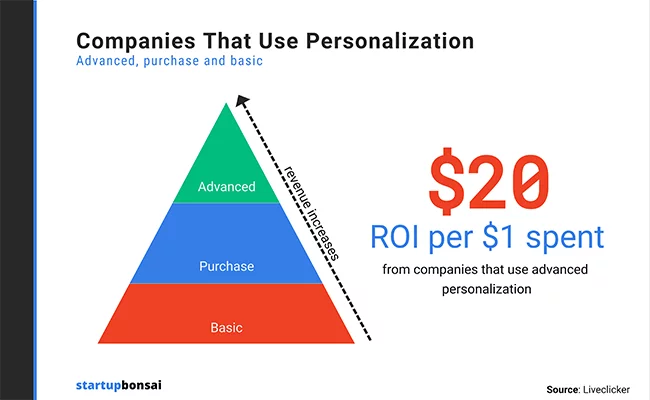
Harnessing the power of data analytics, businesses can offer personalized product recommendations that cater to each customer’s unique preferences and interests. By analyzing customer behavior, purchase history, and demographic information, businesses can tailor their recommendations to match individual preferences, leading to a more engaging and relevant shopping experience. Here’s how personalized recommendations can be implemented effectively:
- Data Analysis: Utilize advanced data analytics techniques to gather insights into customer behavior, such as browsing history, past purchases, and product interactions. Analyze this data to identify patterns, preferences, and trends that can inform personalized recommendations.
- Recommendation Algorithms: Implement recommendation algorithms that leverage machine learning and artificial intelligence to suggest relevant products to customers. These algorithms can dynamically adjust recommendations based on real-time data and user feedback, ensuring accuracy and relevance.
- Contextualized Suggestions: Deliver personalized recommendations at various touchpoints throughout the customer journey, including product pages, checkout, and email marketing campaigns. Tailor recommendations based on the customer’s current browsing session, cart contents, and purchase intent to maximize relevance and effectiveness.
- Cross-Selling and Upselling: Identify opportunities for cross-selling and upselling by recommending complementary or higher-value products based on the customer’s purchase history and preferences. Suggesting relevant add-on items or upgrades can increase average order value and drive incremental revenue.
- A/B Testing: Continuously evaluate and refine recommendation strategies through A/B testing and experimentation. Test different recommendation algorithms, placement strategies, and messaging variations to optimize performance and effectiveness.
- Feedback Loop: Solicit feedback from customers to gauge the relevance and effectiveness of personalized recommendations. Monitor engagement metrics, such as click-through rates and conversion rates, to measure the impact of recommendations on customer satisfaction and purchase behavior.
#9 | Post-Purchase Support
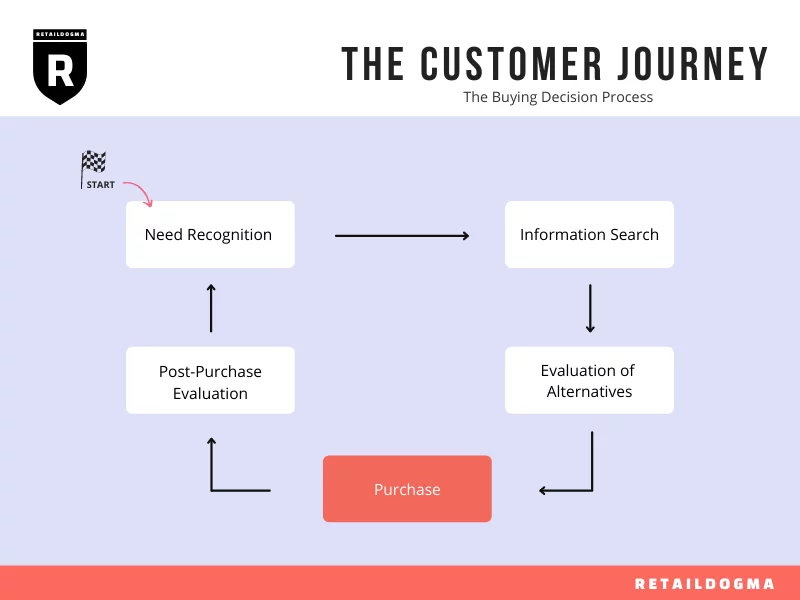
Providing proactive post-purchase support is essential for maintaining positive customer relationships and addressing any concerns or issues that may arise after a transaction. By reaching out to customers with follow-up communications, businesses can reaffirm the buyer’s decision, foster trust, and demonstrate ongoing commitment to customer satisfaction. Here’s how businesses can offer effective post-purchase support:
- Order Confirmation: Send immediate order confirmation emails or messages to customers after they complete a purchase. Confirming the order details, estimated delivery date, and contact information reassures customers and sets clear expectations.
- Shipping Updates: Provide regular updates on the status of the customer’s order, including shipping notifications, tracking information, and delivery confirmation. Keep customers informed about any delays or changes to their delivery schedule to minimize uncertainty and frustration.
- Satisfaction Surveys: Send post-purchase satisfaction surveys to gather feedback from customers about their shopping experience. Encourage customers to share their feedback, suggestions, and concerns to identify areas for improvement and enhance overall satisfaction.
- Product Support: Offer comprehensive product support and assistance to customers after they receive their order. Provide resources such as user manuals, troubleshooting guides, and FAQs to help customers resolve any issues or questions they may have about the product.
- Customer Feedback: Actively listen to customer feedback and respond promptly to any inquiries or complaints. Addressing customer concerns in a timely and empathetic manner demonstrates a commitment to customer satisfaction and helps mitigate potential negative experiences.
- Loyalty Programs: Reward customers for their repeat purchases and loyalty with exclusive offers, discounts, or rewards. Implement loyalty programs that incentivize customers to engage with your brand and encourage repeat business.
#10 | Interactive Community Engagement

Create an inclusive community where customers can actively participate in discussions, share their product experiences, and seek advice from fellow members. Building a sense of belonging and camaraderie within the community can serve as a protective barrier against potential buyer’s remorse. Here’s how businesses can foster interactive community engagement:
- Online Forums and Groups: Establish online forums or social media groups dedicated to specific product categories or customer interests. Encourage members to ask questions, share feedback, and interact with one another in a supportive environment.
- User-Generated Content: Showcase user-generated content, such as reviews, photos, and testimonials, to highlight real-life experiences and insights from satisfied customers. Feature user-generated content prominently on product pages and marketing materials to inspire trust and authenticity.
- Q&A Sessions and Live Chats: Host live Q&A sessions or interactive chats where customers can engage directly with product experts, brand representatives, and fellow community members. Provide opportunities for customers to ask questions, seek advice, and connect with like-minded individuals in real-time.
- Customer Ambassador Programs: Identify loyal customers who are passionate about your brand and products, and invite them to become brand ambassadors or community moderators. Empower these advocates to share their experiences, answer questions, and foster meaningful connections within the community.
- Exclusive Events and Meetups: Organize exclusive events, webinars, or meetups where customers can meet face-to-face, network, and deepen their engagement with the brand and fellow community members. Create opportunities for customers to share their stories, discuss product features, and forge lasting connections.
- Feedback and Collaboration: Solicit feedback from community members on product improvements, features, and initiatives. Actively involve customers in the co-creation process, listening to their suggestions and incorporating their ideas into future product developments.
- Supportive Environment: Cultivate a supportive and inclusive environment where customers feel empowered to express themselves, share their opinions, and seek assistance without fear of judgment or criticism. Foster a culture of respect, empathy, and collaboration among community members.
Conclusion:
By nurturing an interactive community where customers feel valued, respected, and connected, businesses can not only mitigate the risk of buyer’s remorse but also foster brand loyalty, advocacy, and long-term customer relationships. Emphasizing the importance of each touchpoint in the customer journey is essential for delivering a seamless and satisfying experience that resonates with customers on a deeper level.
FAQs on Buyer Remorse:
What is the most common cause of buyer’s remorse?
The most common cause of buyer’s remorse is the discrepancy between the expectations and reality of the purchase. This could include factors such as:
- Unrealistic expectations set by advertising or marketing campaigns
- Peer pressure or external influences
- Impulsive buying decisions without adequate consideration
- Financial concerns or overextending one’s budget
Who is responsible for reducing buyer’s remorse?
Both consumers and businesses share responsibility for reducing buyer’s remorse:
- Consumers: Should practice mindful purchasing, research products thoroughly, and consider their needs and budget before making a purchase.
- Businesses: Can reduce buyer’s remorse by providing accurate product information, transparent pricing, flexible return policies, and excellent customer service. By focusing on customer satisfaction and experience, businesses can help mitigate feelings of regret and build trust with their customers.



